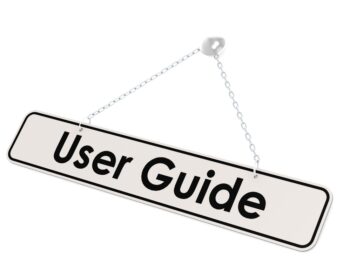Employers will often look at their loss runs on recently closed claims and mutter to themselves “I have no idea of how the claims professional could justify paying that much money for that claim”. How the settlement amount of a particular workers’ compensation claim is determined is often a mystery, but it does not have to be.
Everything That Occurs Throughout Claim Impacts Settlement
The settlement value of a work comp claim is not determined the day the final medical report is received in the claims office. Everything that has occurred on the claim from the moment the injury happen has an impact on the claim settlement value. While it is not possible to place a dollar value on every action taken by the claims professional in handling the claim, quality claim handling following the industry ‘best practices’ results in claims being settled for a lower overall cost.
The evaluation of the claim for settlement is greatly influenced by the investigation completed by the claims professional into how the injury occurred, the nature of the injury, the extent of medical treatment for the injury, and the duration of the medical treatment. If the investigation of the claim results in a determination that the claim is not compensable, the settlement value is reduced to near zero. On the other hand, if the investigation verifies the compensability of the injury, the claim will have the full settlement value.
Click Link to Access Free PDF Download
“8 ‘Think Outside the Box’ Tactics to Settle Workers’ Comp Claims”
Once the work comp claim has been determined to be compensable, the proper integration of medical management and vocational rehabilitation, if needed, will have an impact on the settlement evaluation. Proper medical management throughout the course of the employee’s recovery will prevent the claim from being larger than necessary, and will also facilitate a better settlement.
Employers Can Have Major Impact on Settlement Value
Employers can have a major impact on the settlement value of a workers’ compensation claim. A primary component of the settlement value of the work comp claim is whether or not the injured employee was able to return to his former employment at the same rate of compensation the employee enjoyed prior to the injury.
Modified duty/transitional duty reduce the cost of the indemnity paid while the claimant is medically treating. Modified duty also impacts the extent of the disability rating the medical provider will assign. Through a gradual increase in the employee’s working level while complying with the doctor’s work restrictions for the employee, the employer can have the employee back to working full duty by the time the employee is released from further medical care. When the medical provider knows the injured employee has returned to his prior employment, the permanent partial disability rating the medical provider can justify assigning is reduced.
The claims professional will review the medical documentation, both that of the primary medical provider along with any independent medical verification from an independent medical examination obtained by either the claimant or the claims professional. A detailed analysis of the medical documentation serves as the starting point for the claims professional’s settlement evaluation.
The analysis of the settlement value will include a review of:
- Medical reports
- Value of future medical treatment
- Employee’s compensation rate prior to injury
- Indemnity rate for permanent partial disability or permanent total disability
- Impairment rating
- Future indemnity cost
- Vocational rehabilitation cost
- Jurisdiction
- Any issues in dispute
- Offsets for social security disability, Medicare and compensation from third parties responsible for the injury
A proper settlement evaluation by claims professionals is a settlement range, not a precise number. For example: A settlement value range of $100,000 to $115,000, not exactly $112,345.67.
Most Claims Are Settled Based on Give & Take Negotiations
The settlement range reflects the minimum the claims professional calculates to be fair, and the maximum the claims professional is willing to pay voluntarily. Most claims are settled based on give and take negotiations. The claims professional should prepare for the settlement negotiation by evaluating and applying both the legal requirements of the jurisdiction and the talking points on what is not mandated by the statutes of the jurisdiction.
The settlement value placed on the workers’ compensation claim by the claims professional often differs from the value placed on the claim by the employee’s attorney. This is often referred to as the settlement gap and is the primary reason claims are adjudicated. The settlement gap can frequently be bridged by the use of a structured settlement.
With a structured settlement the insurer purchases an annuity(s) providing periodic payments over an extended period of time. The claimant receives a higher total dollar amount while the insurer limits the cost of the claim to the settlement value range determined prior to the start of the settlement negotiations.
If the claims professional and the employee/employee’s attorney cannot agree on the settlement value of the claim, every jurisdiction has a state department that oversees workers’ compensation and can provide a judge/commissioner/etc. to assist in resolving the settlement value of the claim.
Author Michael B. Stack, CPA, Director of Operations, Amaxx Risk Solutions, Inc. is an expert in employer communication systems and part of the Amaxx team helping companies reduce their workers compensation costs by 20% to 50%. He is a writer, speaker, and website publisher. www.reduceyourworkerscomp.com. Contact: mstack@reduceyourworkerscomp.com.
Editor: Duke T. Wolpert, Director of Marketing, Ringler Associates is responsible for new business development across the carrier, TPA, and self-insured marketplace in the U.S. and Canada. Prior to joining Ringler Associates, Duke held leadership positions in the insurance, compliance and managed care industries. www.ringlerassociates.com. Contact: dtwolpert@ringlerassociates.com
©2013 Amaxx Risk Solutions, Inc. All rights reserved under International Copyright Law.















Do you happen to have a generic WC settlement evaluation worksheet electronic or paper?